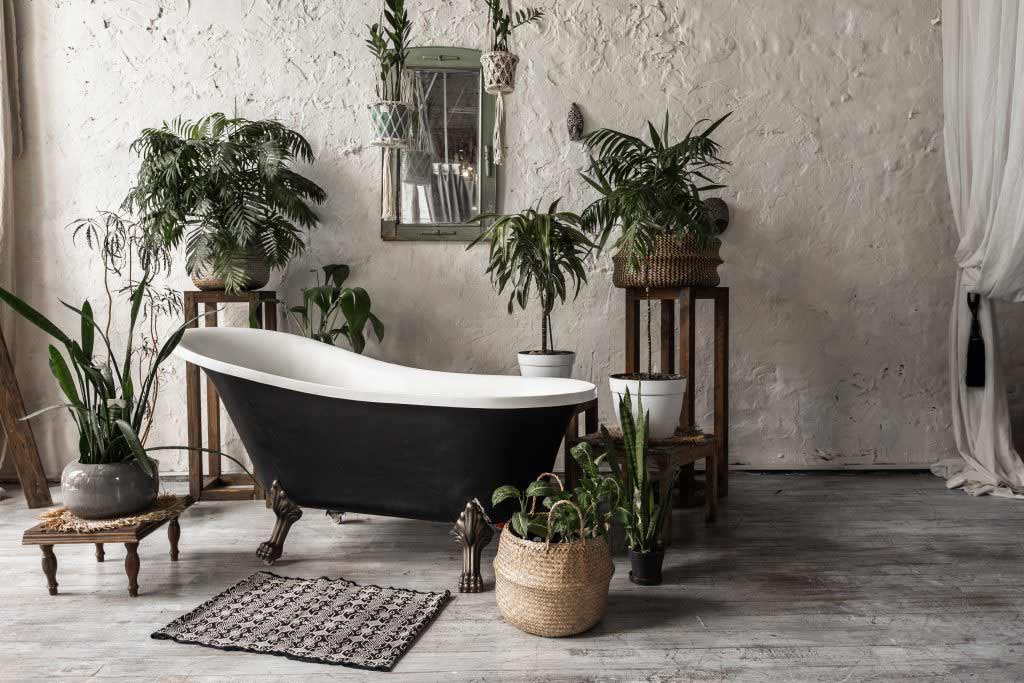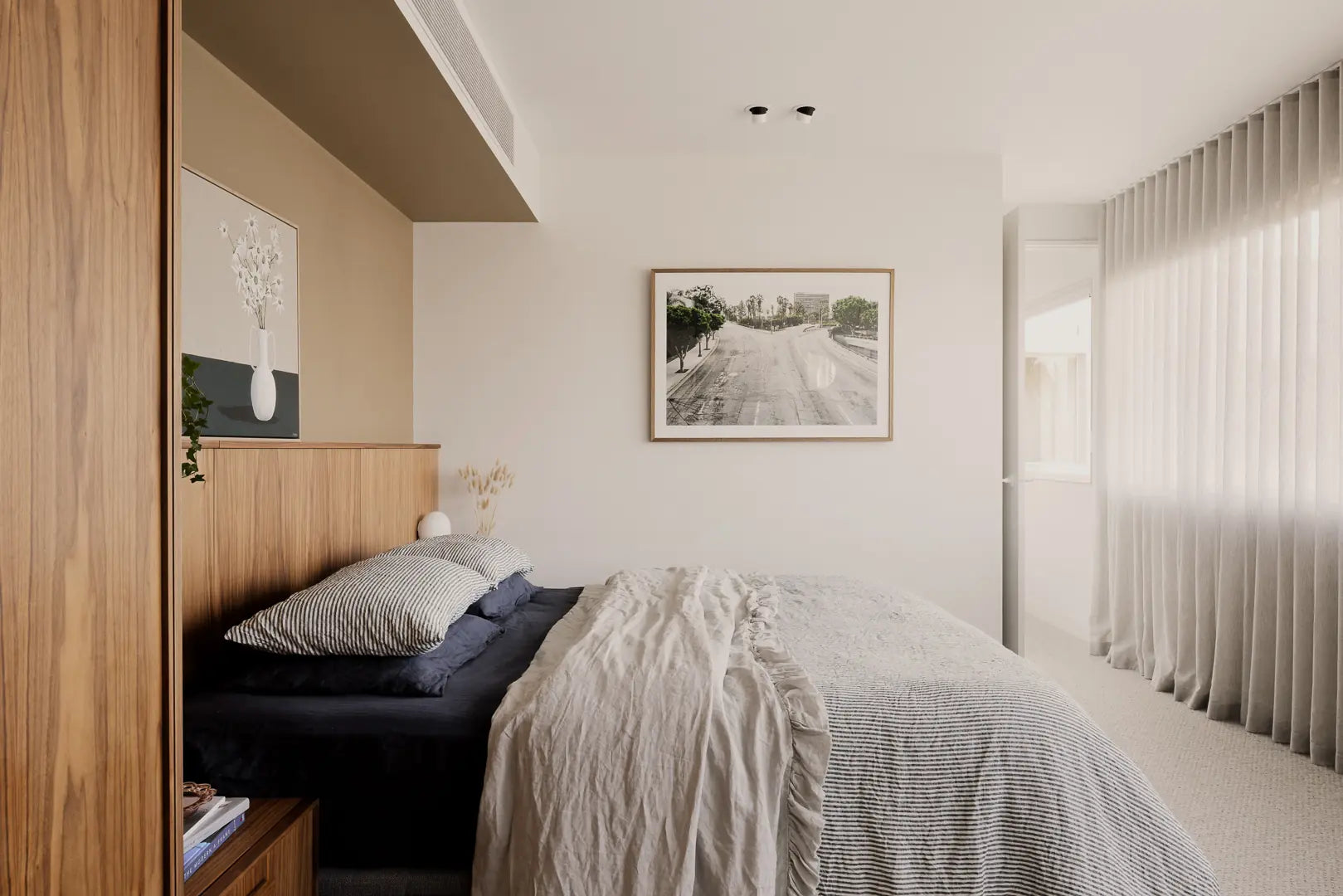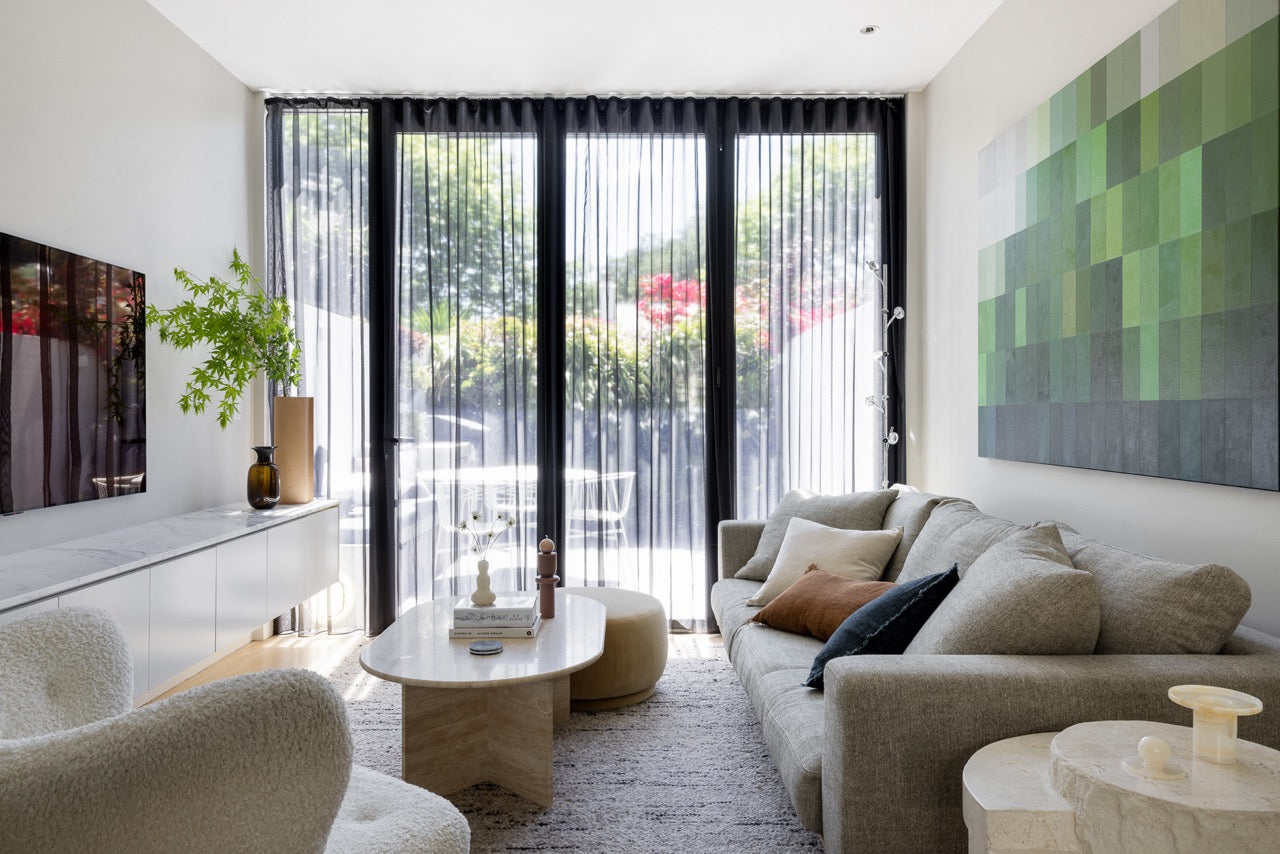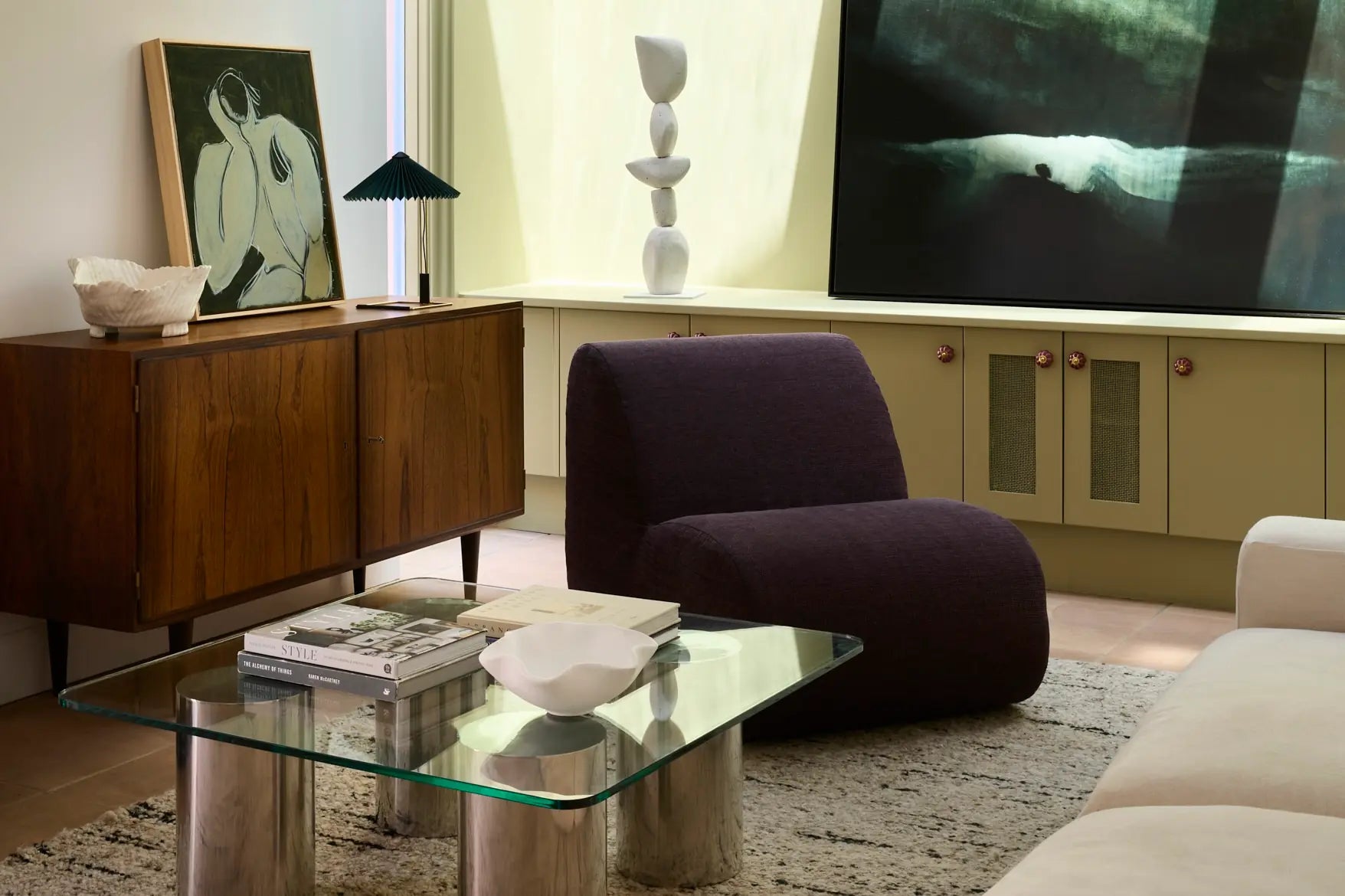If you were to hear the word Biophilia for the first time, you’d be forgiven for thinking it may be something you’d have to Google when the kids weren’t around. So what is Biophilia?
Simply put, Biophilia is the love of nature – and Biophilic interior design is the stuff the naughty dreams of crazy plant-people are made of.
This interior design trend is a whole lot more than just loading up your space with potted plants.
Biophilic interior design takes the merging of inside and outside to a whole new level, and the results are breathtaking.
Homes decorated using biophilic interior design principles are calming, restorative escapes from urban life, using nature as a muse to create something that blurs the line between outside and in.
We chatted to FURNISHD.’s nature-loving design team to get the lowdown on this greener-than-green interior design trend, and how you can apply biophilic design principles to achieve the look (and,more importantly, the feel), at your place.
First thing's first - what is Biophilic Interior Design?
Biophilic Interior Design is based on the idea that we have a genetic connection to nature, forged through our pre-Woolies centuries of living off the land.
Our ancestors’ respect of, and connection to, nature – according to the principles of Biophilic design – is deeply entrenched in our genes, and so even now, we are healthier and happier when we have contact with the natural world.
Research has shown time and time again that ‘green time’ increases happiness, creativity, productivity and wellbeing, and we’ve chatted before about how the humble pot plant (or three) can make home office spaces more productive, so it stands to reason that the rest of our homes can also benefit from becoming more natural environments.
But we’re not just talking a plant here and there.
Biophilic design will take your potted peace lily and raise you a fully grown tree, or a completely greened-up wall in the bathroom, replacing tiles with an abundance of leafy friends to connect you to nature while you’re mitigating the coffee and red wine with your toothbrush.
It takes its cues from Mother Nature when it comes to colour, texture and shape too, and the results are spaces that feel both relaxing and energising at the same time.
How to apply Biophilic Interior Design in 10 easy steps:
1. Carefully choose nature-inspired textures
Choose furniture and accessories with textures that emulate the ones found in nature.
The easiest way to do this, of course, is to choose pieces made from natural materials that have been left as close to their original state as possible.
Timber pieces that retain some of the texture of the tree it once was, stone side or coffee tables, and a rug to imitate the texture of grass underfoot are all good options.
A faux-fur throw for the couch, linen cushion covers, and wicker light shades also add natural texture to your home.
Hi-shine laminates and man-made materials like plastic won’t work in these spaces, and you’ll probably want to get rid of the disco ball.
2. Use pattern to imitate nature
If you’ve got kids, chances are you’ve heard Elsa singing about ‘frozen fractals’ a few (thousand) times.
Fractals are patterns in nature that are created by repeating shapes in differing scales, where any section resembles the whole – think Elsa’s snowflakes, the delicate veins on leaves, pinecones, fish scales, and sturdy tree branches splitting off into smaller ones again and again until they’re twigs.
Fractals are proven to be calming to look at, so emulating them in your home is another way that you can use biophilic design principles to create a restorative space.
You can emulate these patterns in your home with wall tiles, natural wood grain, wallpapers in geometric designs, and décor and accessories that take inspiration from nature.
“Biophilic design will take your potted peace lily and raise you a fully grown tree, or a completely greened-up wall in the bathroom, replacing tiles with an abundance of leafy friends to connect you to nature”
3. Choose colours from the great outdoors
Colour is an easy way to incorporate biophilic design principles in your home – after all, nature provides us with one hell of a colour palette to choose from.
Take your inspiration from the outdoor environment that you love the most.
Maybe for you it’s the beach or ocean, and you’ll choose hues of blue, beige and soft pastels.
Or maybe you’re happiest in leafy spaces, and you’ll go for a palette of greens to bring nature into your home.
Perhaps the sky is your inspiration, and you’ll select a palette of colours that reflect its ever-changing mood – blues, greys, pinks and indigos.
Or maybe you’re an earthy sort, and a palette of browns, beiges, greys and ochre reds will make you feel grounded.
Use your palette for walls, soft furnishings and accessories.
4. Use organic shapes to mimic nature
Choosing furniture and accessories with shapes reminiscent of those forged by nature are integral to biophilic interior design.
Think the gentle curves of a river-worn stone, the meandering path of a river, or the undulating ups-and-downs of sand dunes.
In biophilic interior design, natural shapes can be incorporated by looking for furniture and accessories that steer clear of straight lines and sharp corners.
Instead, look for pieces with curved lines and organic or irregular shapes.
Handmade items made from natural (and minimally altered) natural materials are perfect for this design trend.
5. Use indoor plants to connect to nature inside
An article about biophilic interior design would be incomplete without a mention of indoor plants and greenery.
While the fully grown trees that are possible in biophilic public spaces and workplaces might be a bit much for the average suburban digs, feel free to go as big as you can to bring some life into your home.
From potted plants to living walls, plants can be used inside the home to create texture, inject colour and create a strong connection to nature.
Hang them from the ceiling, use them as table centrepieces, grow herbs in pots in the kitchen, and use larger potted plants as room dividers or to fill dead spaces.
They’re proven to help us relax, they purify the air, and give us greater mental clarity, and all we have to do in return is remember to water them every now and again – not a bad trade off!
6. Choose natural flooring and rugs
The soles of your feet get a hell of a lot of joy from being out in nature.
Walking barefoot on the beach or across soft grass evokes an innate feeling of connection and escape, and the flooring in your home can give you the same experience.
Thankfully, you don’t have to tear up the carpet and replace it with soil and lawn seed or back a truck full of sand up to the front door.
If you’re going all in or you’re starting from scratch, consider stone flooring, polished concrete finishes inlaid with pebbles, or timber floorboards that celebrate the natural colour and texture of the wood.
Alternatively, seagrass and jute mats, or soft rugs with a pile that you can close your eyes and pretend is grass, are cost effective ways you can introduce some biophilia to your floors.
7. Create an unimpeded view of the great outdoors
Open the curtains (or ditch them all together) and let the view of the garden in.
If your view is of your balcony, fill it with a terrace garden.
Or if you look out onto something decidedly un-green, like a carpark or the neighbours garage, install some window boxes and fill them with greenery to enjoy through the window and to distract from the constructed landscape beyond.
8. Incorporate natural sounds to complement your biophilic interior
Getting out into nature is as much about the sounds as it is about the sights and feels, so incorporating some natural ambient sound into your home will elevate your feeling of connectedness to nature.
If you don’t live somewhere where opening the window will let a welcome earful of birdsong, think about including a water feature somewhere inside for its gentle background noise, or even find yourself a nature soundtrack you like and play it softly in the background.
9. Let air flow freely through the house to mimic being outside
There’s nothing stuffy about being outside.
Open the windows and let some air in!
10. Use natural and artificial light
Make the most of the natural light by keeping windows as uncovered as possible.
Light and shade are integral elements of every natural environment, so when the natural light runs out for the day, make sure you have a range of lighting options so you can adjust it to suit.
Lamps and candles will allow you to diffuse the overhead lighting and create a more natural effect.
Think you might be a raging biophile? Let us help you make your home the nature-inspired haven you’ve been dreaming of!



